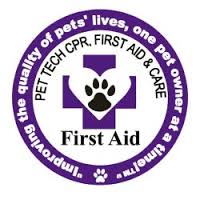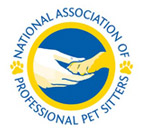You find a circle of hair loss (ring) and the skin is red, scabbing over/puffy. They are frequently scratching at one spot. Also, their nails may be cracked and brittle.
This fungal infection CAN be transferred to humans, with children being more susceptible, by direct contact or touching a contaminated object/surface. Incubation time is 7-14 days.
What is ring worm? First, it is NOT a worm. Ringworm is a fungi that thrives on hair (hence animals are great hosts). Its spores can exist for months without direct contact. Ringworm lives in soil, bathrooms, basically anywhere moist and warm. It is a similar fungus to Athlete’s foot. It feeds on the keratin that is found in the outer layers of skin, hair, and nails.
“Although mild cases resolve spontaneously in three to four months, all cases of ringworm should be treated to prevent progression and spread to other pets and people in the household.” -PetMD
In Humans
Acquired: By contact with the infected hair of dogs and cats, typically found on carpets, brushes, combs, toys, and furniture.
Symptoms:
Ringworm can invade the nails. This results in nails that are dry, cracked, brittle, and deformed. Another sign are skin lesions such as small patches of skin thickening and reddening with raised scaly edges. Frequently found in the beard, scalp, groin area or feet. If on your scalp, you may develop bald patches.
Children are especially susceptible.
Treatment:
1. antifungal shampoo containing miconazole. Apply over-the-counter antifungal or drying powders, lotions, or creams that contain miconazole, clotrimazole to affected areas.
2. Also, wash everything where hair may be found (brushes, bed, bathroom, sofas) with bleach/hot water.
3. antifungal tablets, the two main types of antifungal tablet being terbinafine or griseofulvin
In Dogs
Acquired: Microsporum canis Ringworm in dogs is primarily a disease of puppies and young adults. Contact with another dog, cats claws, infected soil or surface.
Symptoms:
A spreading circle of hair loss with scaly skin at the center and a red ring at the periphery. Typical areas of involvement are the face, ears, paws, and tail. The nails may show signs of being brittle and breaking off. Frequent licking and scratching.
Treatment:
1. BATHE
You will need the following items: a disposable sponge, 2 buckets, a plastic cup, a disposable towel, miconazole shampoo, vinegar and Betadine. Fill one bucket with lukewarm water to use for your pet’s wash. Fill the other bucket with a mixture of white vinegar and lukewarm water, 4 parts water to every part vinegar, for your pet’s rinse. White vinegar is a natural antiseptic. Wash and suds pet from toes to tail. Use fresh vinegar rinse water to avoid re-infecting.
2. MEDICATION
Tablets of Griseofulvin taken orally are the most common drug prescribed by vets, although newer drugs such as itraconazole or terbinafine (Lamasil) are often preferred since they have fewer side effects.
3. Apply a topical antifungal agent containing miconazole 2 percent cream or 1 percent lotion twice a dayFinally, on a nightly basis, coat your pet with Lamisil or any over the counter Athlete’s Foot infection cream for two weeks. The key ingredient in each product is the same – Miconazole.
In Cats
Acquired: Kittens and Seniors are most likely to contract it from contact with spores found in soil or contaminated surface. Can also get it from being scratched by another cat that is infected.
Symptoms:
A spreading circle of hair loss with scaly skin at the center and a red ring at the periphery. What looks like “ashes” on the cats chin. Many times there are few visible symptoms, just the constant itching caused the secondary infection.
Treatment:
1. Bathe (see above BATHE section, same as for dogs). Contain your pet to one place: a crate, single entrance room, while you are disinfecting the home.
2. Disinfect everything from floors to bedding to sofas. Anywhere your pet has shed fur needs to be treated.
Soak all fabric bedding in a mixture of Chlorox infused soap and water. Make sure to measure five cups hot water to one cup Chlorox. Cats skin can be sensitive so air dry completely before letting them lay on it.
3. Apply a topical treatment like Clotrimazole, PetsBestRx Ringworm or any other medication with Miconazole.
4. Administer oral treatment from the pet store: Ketoconazole tablets work well
****If your pet is not responding to the anti-fungal treatments, than perhaps your pet is suffering from something other than ringworms. Consult your vet.***












Speak Your Mind